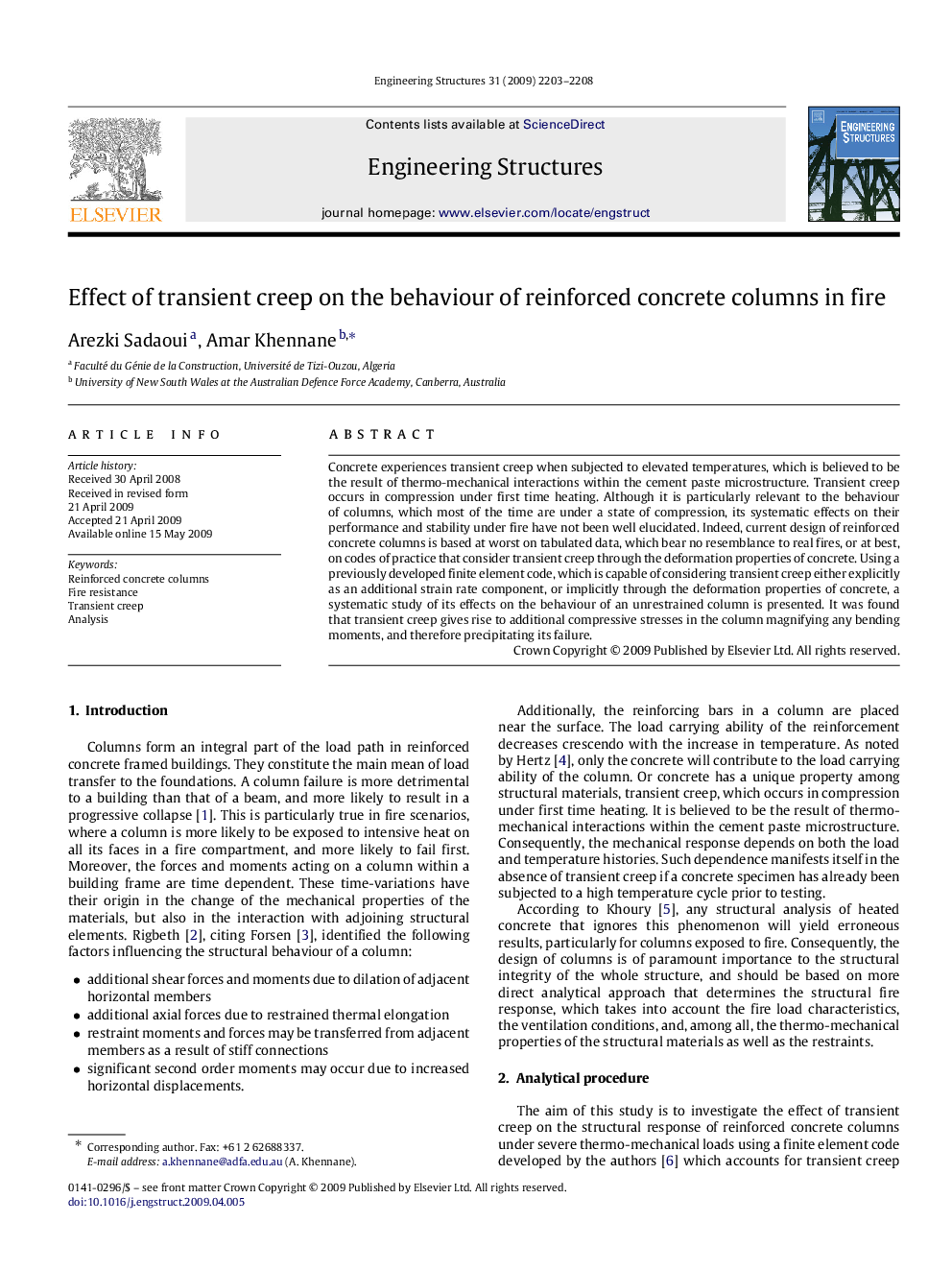| کد مقاله | کد نشریه | سال انتشار | مقاله انگلیسی | نسخه تمام متن |
|---|---|---|---|---|
| 268520 | 504437 | 2009 | 6 صفحه PDF | دانلود رایگان |

Concrete experiences transient creep when subjected to elevated temperatures, which is believed to be the result of thermo-mechanical interactions within the cement paste microstructure. Transient creep occurs in compression under first time heating. Although it is particularly relevant to the behaviour of columns, which most of the time are under a state of compression, its systematic effects on their performance and stability under fire have not been well elucidated. Indeed, current design of reinforced concrete columns is based at worst on tabulated data, which bear no resemblance to real fires, or at best, on codes of practice that consider transient creep through the deformation properties of concrete. Using a previously developed finite element code, which is capable of considering transient creep either explicitly as an additional strain rate component, or implicitly through the deformation properties of concrete, a systematic study of its effects on the behaviour of an unrestrained column is presented. It was found that transient creep gives rise to additional compressive stresses in the column magnifying any bending moments, and therefore precipitating its failure.
Journal: Engineering Structures - Volume 31, Issue 9, September 2009, Pages 2203–2208